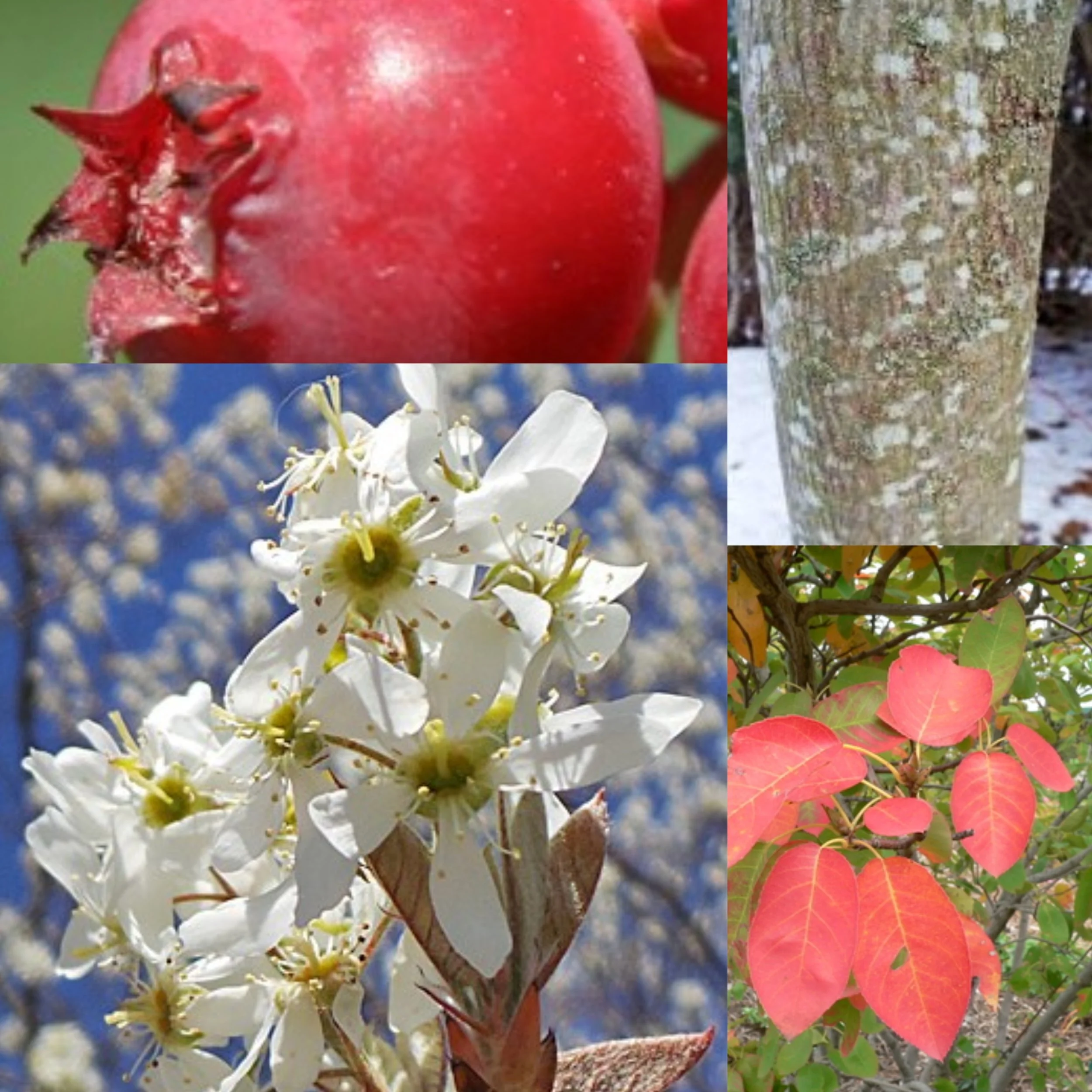Serviceberry: A Tree for all Seasons
Serviceberry is a plant with year-round appeal.
Serviceberry (Amelanchier spp.) is a native North American woody perennial that can be grown as either a large shrub or a small multi-stem tree. There are about 30 species of Amelanchier, some with very interesting histories.
Serviceberry is a plant with year-round appeal. The bright white flowers are short lived, but are some of the earliest arrivals of spring. Fall foliage is red, orange and yellow and edible purple fruit graces the trees. They are self-fruiting and do not need a second tree for pollination. Even the bark is attractive with its smooth gray appearance which stands out particularly when planted near conifers. The trees and bushes can be used as specimen plants, in a border, as backdrops or screens. This is also an excellent wildlife plant that attracts pollinators, birds, and other animals.
The common name, Serviceberry, seems to have stemmed from the fact that it blooms in early June, just as the ground thaws. Early settlers then knew they could begin “services” to bury the dead from the winter. It is also known as Juneberry as some species have an edible berry that ripens in June. Another species is known as Shadbush, more common on the Eastern seaboard, as bloom around the same time that American shad (type of fish) spawn along the Atlantic coast. Saskatoon serviceberry is native to the region that gives it the name.
Regardless of the species, they are all in the apple family and thus have a pome fruit (A pome is defined as a fruit that has several small seeds surrounded by a membrane in the center of the edible flesh), not a berry. However, since the entire fruit it consumed, it is often called a berry. The blueberry-like fruit can be used in jams, jellies, pies, and smoothies
Serviceberry is considered an understory tree, growing from 3-25 feet depending on the species, and can be planted in full sun to part shade. However, if berry production is the goal, full sun is going to be the best bet. It will tolerate most soil types, but not heavy clay which will lead to root rot. Well drained loam will yield the best results. After planting, mulch lightly around the base to retain moisture and reduce weed competition.
Maintenance is minimal for these plants. They have few serious pest or disease issues. As a member of the apple family, Serviceberry can be prone to fire blight. Therefore, some pruning is advised to keep the good air flow through the center. Prune during the dormant season to keep the canopy open and allow for light penetration. Prune also for shape and for fruit development. Fruiting will be best on two- to four-year-old branches, so prune out anything older.
As the fruit ripens from burgundy to blue-black, it will be a race to see who gets them first, the birds and chipmunks or the people. The darker the berries, the sweeter they are and they are the first to be plucked off by marauding animals.
Even with the potential for doing battle with wildlife, these plants are well worth the risk. They are a great size and shape for the home landscape. Since they are a smaller ornamental tree or shrub, they are perfect for the urban home.
Carol Shirk
Certified Master Gardener
